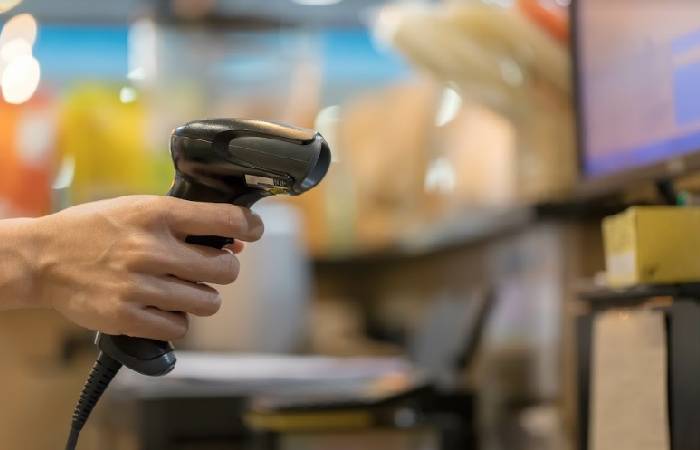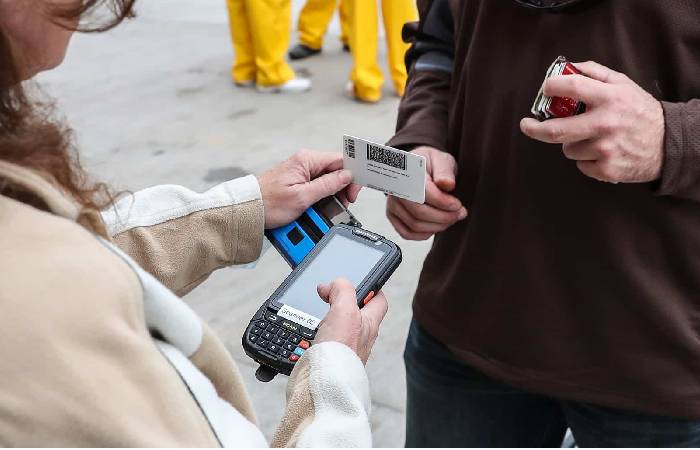Here’s what technology does in the background when you use an ID scanner. Simply put, we know about ID scanning. We’ve been in this trade since 2003 and were the first to bring mobile ID scanning to the marketplace on iOS devices. You’ll often overhear us talk about what ID scanning can do for you: notice fake IDs, prevent fraud, surge security, and put life at ease in many ways.
We combine our software with the best mobile and desktop hardware, with identity scanners. You may already know this, but all the information you see on the front of a government-issued ID or driver’s license contains a 2D barcode on the back. When an ID scanner reads this barcode, it extracts all the information printed on its face.
Table of Contents
What Exactly Do Identity Scanners Detect and How Do They Do it?

The ID scanner is essentially a barcode scanner. Most mobile scanners come with a default barcode reader app. Unlike our proprietary software, the scanner will extract the raw barcode information and display the data on your screen when used with this built-in software. Unfortunately, desktop browsers cannot use it without some software.
When used with software, ID scanners become potent tools that accurately detect whether an ID is real or fake. For example, IDScan.net software analyzes the information in the barcode. However, the analysis goes a few steps further than extracting the data from the barcode after the ID scan, the IDScan. And net software compares the ID fields with the field format for all IDs in that state. IDScan.net uses an extensive ID library and a robust algorithm that adds ID format changes when created, updated or recognized.
How Does ID Scanner Detect Fake Ids?
In addition to identity analysis, IDScan. And net software calculates expiration date and authenticity.
A scan will capture the ID’s date of birth and expiration date. The software then calculates whether the ID has expired (if it has expired) or whether the ID holder is at least a certain age (for example, 18 or 21) from the scan date.
When combined with the automatic capture software WizzForms, selected identification fields and information can be automatically parsed and uploaded to existing POS or interfaces. This software reduces human error and saves time when uploading customer information to business systems.
What Types of Documents can ID Scanner Read?

ID scanners range from desktop and mobile devices to scanning apps on a smartphone. Depending on business needs, they can be cloud/wifi based or standalone.
It’s essential to consider the exact type of documents specific scanners can read. Scanners can range from accepting nearly universal documents, including state IDs, driver’s licenses, passports, international IDs, and green cards, to only buying unique document types. Such as membership. cards
It is also important to note the type of barcode that must scan it on the document. Common barcode types include:
1D – Commonly called linear barcodes and used in all business transactions
2D (includes PDF417 and QR code): represents more data per unit area than 1D barcodes
PDF417 barcodes appear on printed boarding passes and government-issued ID cards
Magnetic Stripe: Displayed as a straight line rather than a series of parallel lines. Stores a limited amount of information such as account number, student ID number
Magnetic stripes are commonly seen on gift cards, student ID cards, and loyalty/membership cards.
What Information Appears When a Fake ID is Scanned?
Information store in a 2D barcode can read with commonly available 2D barcode readers. If a fake ID scans it, as most modern and sophisticated counterfeit products do, the following information will be public and viewable when the phoney ID checks it:
First name
Last name
Date of birth (most ID scanning software uses this to calculate your age)
Address, City, State, Zip Code
license type
Document expiration date
Whether or not this information retains depends on the identification software used. For example, some shows ask, “What’s your star sign?” It will also include optional challenge questions according to the information stored in the barcode.
